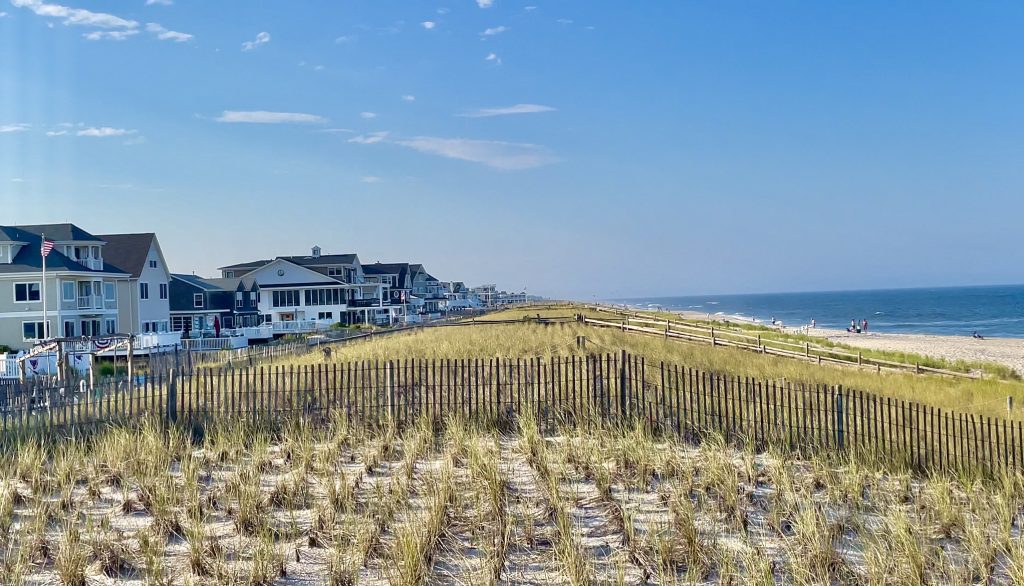Oceanfront residents in Toms River’s Normandy Beach section who sued over the right to place a dune cross-over outside their home scored a victory, with a Superior Court judge ruling in recent weeks that their homeowners’ associations cannot stop them from doing so.
Though the township was named as a defendant in the case, the controversy focused primarily on oceanfront homeowners and the Normandy Beach Improvement Association, whose membership consists of homeowners in the neighborhood, which is split between the jurisdictions of Toms River and Brick townships.
Toms River, following Superstorm Sandy, adopted an ordinance at the request of several homeowners’ associations limiting the number of crossovers beyond what had been previously allowed by federal agencies, the state Department of Environmental Protection, and a slew of deeds and easements dating back to 1921, according to court documents. (One such complaint is embedded at the end of this article as a sampling of what the suits alleged.)
“The people who own property on the beach wanted their own walkways, but the associations behind them only want a walkway every 250 feet,” said Hill.
The ordinance was last updated in 2015, before Hill’s tenure as mayor began, and in the wake of years of litigation following Superstorm Sandy that preceded the beach replenishment projects which resulted in the current dunes. As part of numerous changes to ordinances regarding beach access and development to go along with federal and state demands, as well as talks with homeowners’ associations that had been holding up the replenishment project, a section of an ordinance required an oceanfront homeowner to obtain a permit before building a crossing over the dune. A caveat of the permit ordinance, however, limited crossovers to one every 250 feet – meaning some homeowners who previously had private walkways to the beach would no longer be able to rebuild them.
“The court decided that if you own private property, you can put your walkover over there, so the town was going to be sued if we didn’t allow it,” Hill said.
The township council this week introduced an ordinance on first reading that takes the court’s opinion into account and eliminates the 250-foot limit between crossings.
Residential crossings do not cut the dune line, but instead run over top of them, ensuring that the line of protection afforded by the dune system is not disturbed. Most are made of simple timber or an all-sand path marked by snow fencing or wooden posts.
The litigation wound its way through the court system for about three years, resulting in a number of motions being decided-upon and consent orders approved in June.
In his complaint representing one property owner, attorney Philip G. Mylod wrote that an the agreement between homeowners and the state and federal governments granting easements for beach replenishment work to go forward “specifically enabled the oceanfront property owners, as well as their heirs, successors, and assigns to construct private at-grade dune walkover structures in compliance with applicable federal, state or local laws or regulations, provided that the structures did not violate the integrity of the repaired dunes or their dimensions or functions.”
Other easement documents included language that explicitly allowed the construction of such crossovers, and only required permits from the township if excavation work or re-grading was to be performed.
While the ordinance is expected to be passed on final reading at the council’s next meeting, there is a chance that litigation on the matter will continue.
“Now, the people who live behind them may file suit, so it’s not a done deal, but based on the prior court decision, the only option the township has is to allow them,” said Hill. “We hadn’t eliminated them – we just limited them to every 250 feet.”
Hill said the township would comply with the court’s decision.
The people sued, saying, ‘we have a right to put a walkover there,’ and the court said, ‘yes you do.’
Read the Complaint:

Advertisement

Seaside Heights & Seaside Park
Seaside Heights School Board Seeking More Participation, Will Change Meeting Times

Police, Fire & Courts
Seaside Park Man, 68, Charged in Fatal Crash With Pedestrian

Ortley Beach & North Beaches
Lottery Ticket Worth $10K Sold at Ortley Beach Acme

Ortley Beach & North Beaches
Abandoned Private Island ‘Mansion’ in Barnegat Bay Poised for Demolition








